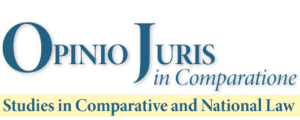What Would Happen To the Actual Malice Doctrine in a Severely Polarized Democracy?—The Case of Taiwan
Authors: Jimmy Chia-Shin Hsu
ABSTRACT
The American legal doctrine of actual malice in tort of defamation, developed by the U.S. Supreme Court in New York Times v. Sullivan and its progeny, is one of the hallmarks of the exceptionally speech-protective First Amendment jurisprudence. Despite the doctrine’s uniqueness among western advance democracies, an Asian new democracy, Taiwan, has undertaken an extraordinary experiment in the past decade to transplant the doctrine of actual malice in its laws of defamation. I analyze how the actual malice doctrine underwent extraordinary twists and turns in Taiwan’s criminal and tort defamation laws in the past decade. I argue that Taiwan’s severe political polarization since 2000 first led to its rise in tort of defamation, and also to its eventual downfall. It was followed then by the divergence of criminal and tort of defamation in terms of fault degree, with criminal defamation leaning consistently toward actual malice and tort of defamation back to negligence. The divergence was a sensible response to the wildly irresponsible culture of exposé in Taiwan’s public sphere that developed after 2005. In light of Taiwan’s experience, I also argue that actual malice presumes a thick layer of social consensus on what counts as irresponsible speech. When political polarization and political distrust destroys the social consensus, the “reckless disregard of truth and falsity” prong of actual malice collapses along with it, as is the case with Taiwan’s criminal libel during the height of political conflict.
Keywords: New York Times v. Sullivan - defamation - libel - actual malice - negligence - gross negligence - fault standards - freedom of speech - reputation - political polarization - comparative law - rumor - the marketplace of ideas - truth - Chen Shui-bian - Kuomintang - Taiwan

